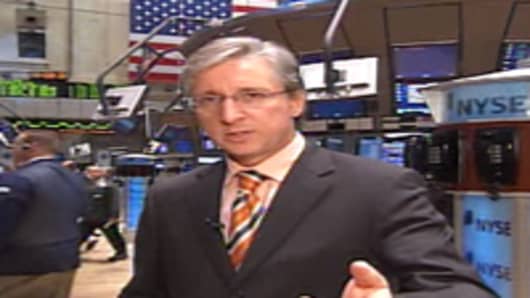Talk about a recession from a very small group of people need to be balanced against the fact that no major strategist is predicting a recession. Many are trimming their forecasts slightly, but that is a long way from a recession.
Even Ben Bernanke maintains a forecast of "moderate" growth of 2.5% in the GDP this year, and a slight expansion in 2008.
Are the conditions for a recession there? One factor often present is high interest rates, which are not present here. Indeed, mortgage rates went down this week, to 6.5% for a 30-year fixed rate mortgage.
Even the argument that housing has always led the economy into a recession, as asserted by Countrywide Chief Executive Angelo Mozillo, is not clear. Housing did not lead the economy into the last recession in 2001. In December 2000, the Fed Funds rate was 6.5% at its peak; rates were low. Home sales were relatively steady then. The contributing factor in that short recession was the bursting of the financial bubble.
Housing arguably was a contributing factor in the 1990-91 recession. There, interest rates were very high--the Fed Funds rate peaked at 9.75% in March, 1989.
Looking at across the uneven economic history of the United States, one thing is very striking: how few recessions we've had in recent memory. The National Bureau of Economic Research (NBER) has noted that there have been only two recessions (1990-91 and 8 months in 2001)-- both of them mild -- in the United States over the past 25 years; over the previous 35 years, they noted, there were eight.
This "great moderation" of the economy has been explained many ways: luck, structural changes in the economy, etc., but in the end even the cautious NBER admits that improved policies on the part of those steering the economy are the likely reason we have avoided recessions:
"This hypothesis has obvious appeal. In our own work, we have found that monetary policymakers have been guided by a better understanding of the economy in recent decades and have largely avoided episodes where they first pursued expansionary policies that caused inflation to rise and then pursued extremely tight policies to bring inflation back down."
This is why the markets have faith in the Fed--since Paul Volcker broke the back of inflation in 1982, the Fed has learned to use its "toolbox" better. They are better at injecting and extracting liquidity; the recent move to lower the discount rate and remove the stigma of borrowing is another example.



